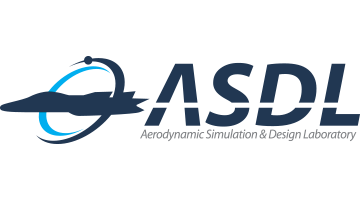Numerical investigation of abrupt wing stall on Fighter
In general, modern fighters operate in the whole region including subsonic, transonic, and supersonic. Among them, the transonic region is a flow region that has all features occurring in the subsonic and supersonic regions. In this region, complex flow phenomena appear that have strong nonlinearity and unsteadiness such as shock-boundary layer interaction, shockwave separation, and turbulent boundary layer. Especially, at high angle of attack, vortices arising from the complex shape of the fighter aircraft interact with each other, resulting in an asymmetrical vortex flow structure on both wings, which is called the Abrupt Wing Stall (AWS).
Since AWS generates asymmetric forces on both wings resulting in uncommanded lateral motion which is detrimental to stability and maneuverability, it is essential to design a fighter to avoid the phenomenon. However, even though this phenomenon has been reported consistently during the past 50 years, the precise characteristic and cause are still not identified. For this reason, AWS is one of the research field which is continuously investigated.
Our laboratory develops in-house flow solver that can capture AWS using the advanced numerical schemes, analyzes the characteristics of the phenomenon based on this, identifies the cause, and finally proposes a way to avoid or reduce the phenomenon.

(left) RANS simulation of fighter, (right) DES simulation of fighter
Figure 1 and 2 shows the results of flow simulation on fighter by the RANS turbulence model and the DES turbulence model, respectively, through pressure contour and iso-surface of Q-criterion. The fighter model used for this simulation includes various components like LEX, duct, flap, and vertical/horizontal tail wing, which are necessary to observe AWS phenomenon. In the case of the RANS simulation, which is a general approach used for flow simulation of flying objects, the vortex structure generated at high angle of attack is severely smeared and symmetric. On the other hand, when applying the DES turbulence model, the detailed vortex flow structure is captured. Above all, the asymmetric flow structure, which is a major feature of the AWS phenomenon, can be confirmed through the difference between left and right of LEX vortex structure and pressure distribution on the main wings.






